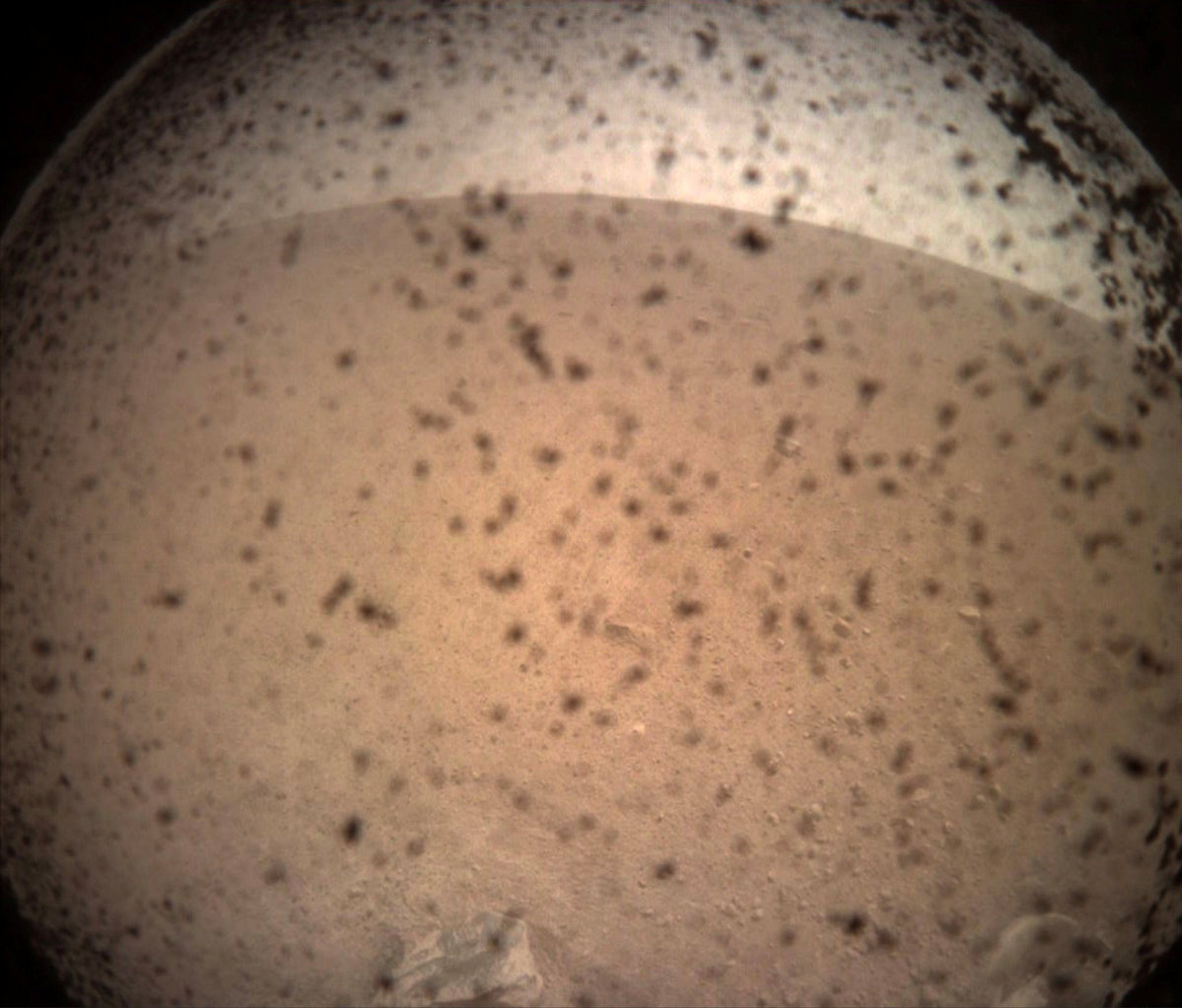NASA's InSight lands on Mars to peer into planet's deep interior


PASADENA, Calif. - NASA's InSight spacecraft, the first robotic lander designed to study the deep interior of a distant world, touched down safely on the surface of Mars on Monday with instruments to detect planetary seismic rumblings never measured anywhere but Earth.
Engineers at the Jet Propulsion Laboratory (JPL) near Los Angeles burst into cheers, applause and hugs as they received signals confirming InSight's arrival on Martian soil - a vast, barren plain near the planet's equator - shortly before 3 pm EST (2000 GMT).
Minutes later, JPL controllers received a fuzzy "selfie" photograph of the probe's new surroundings on the Red Planet, showing the edge of one lander leg beside a rock.
Watch parties for NASA's live television coverage of the event were held at museums, libraries and other public venues around the world, including Times Square, where a small crowd of 40 or 50 people braved pouring rain to witness the broadcast on a giant TV screen affixed to a wall of the Nasdaq building.
InSight's descent and landing, consisting of about 1,000 individual steps that had to be flawlessly executed to achieve success, capped a six-month journey of 301 million miles (548 million km) from Earth.
The spacecraft was launched from California in May on its nearly $1 billion mission. It will spend the next 24 months - about one Martian year - collecting a wealth of data to unlock mysteries about how Mars formed and, by extension, the origins of the Earth and other rocky planets of the inner solar system.
"The reason why we’re digging into Mars is to better understand not just Mars, but the Earth itself," said JPL's Bruce Banerdt, InSight's principal investigator.
A central question is why Mars, once a relatively warm, wet planet, evolved so differently from Earth into a mostly dry, desolate and cold world, devoid of life.
The answers are believed to have something to do with the as-yet unexplained absence, since Mars' ancient past, of either a magnetic field or tectonic activity, said NASA's chief scientist James Green.
While Earth's tectonics and other forces have erased most evidence of its early history, much of Mars - about one-third the size of Earth - has seemingly remained largely static, creating a geologic time machine for scientists, Green said.
InSight and the next Mars rover mission, scheduled for 2020, are both seen as precursors for eventual human exploration of Mars, an objective that NASA Administrator Jim Bridenstine said on Monday might be achieved as early as the mid-2030s.

































